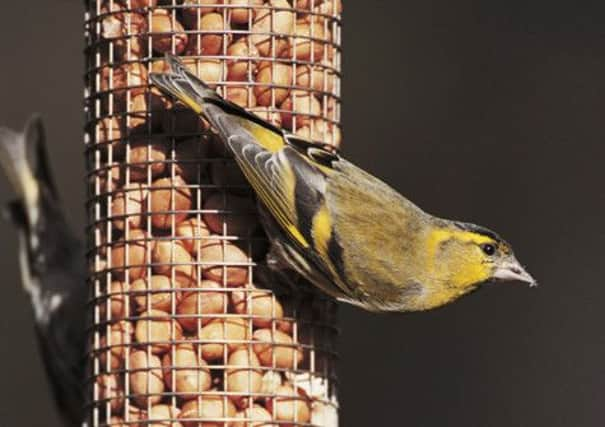Birdwatch: Wintry burst sparks garden visitors


But now, with continuing strong winds, snow and hard frosts and food in the countryside harder to find, more birds are back in our gardens again.
The British Trust for Ornithology’s (BTO) Garden BirdWatch survey reported a big rise last month with more robins, wrens and great tits visiting feeders, and more sightings of blackcaps, birds from central Europe that overwinter here rather than travel south to the Mediterranean and Africa with our summer visitors.
Advertisement
Hide AdAdvertisement
Hide AdOne bird that has continued to stay away from many gardens is the siskin with the lowest numbers reported since the BTO survey began in 1995. This is probably due to a bumper crop of sitka spruce seeds which, until now, has reduced their need to visit gardens.
In previous years there’s been a big increase in siskin numbers in late winter so it will be interesting to see if, with the cold snap, this will also happen in the next few weeks.
I’ve also had several recent reports of yellowhammers in gardens. They are relatively infrequent visitors to feeding stations, preferring instead to roam the countryside among mixed flocks of other buntings and finches in search of seeds at field edges and among stubble. But, along with reed buntings, they will take advantage of garden feeders that are near open countryside.
Mixed thrush flocks are also roaming far and wide in search of food, and it’s always worth checking through these for something unusual. A male ring ouzel which at this time of year should be in Spain or North Africa and a thrush flock was present this week in fields near Roxby, North Yorkshire on the road to Staithes.
Advertisement
Hide AdAdvertisement
Hide AdThe strong winds brought more seabirds along the coast including great and pomarine skuas, great northern divers and several ‘blue’ fulmars, brought south from the Arctic with Iceland and glaucous gulls.
There was also some little auks with one seen in Scarborough harbour; a red-throated diver was also seen there; and a kittiwake was seen on the Old Moor reserve, South Yorkshire.
A drake American wigeon was present among a large flock of Eurasian wigeon at the Nosterfield Local Nature Reserve and Quarry, North Yorkshire. White-fronted geese were seen at Nosterfield and on Flamborough Head.
Two overwintering black-necked grebes are on the main lake at Swillington Ings and a water pipit is in the same area.
Advertisement
Hide AdAdvertisement
Hide AdSmews were at Pugney’s Country Park, Wakefield, Fairburn Ings, and Huggins Carr, South Yorkshire, while great grey shrikes continued to be seen at the Midhope Moor watchpoint and on Thorne Moors, South Yorkshire.
Three short-eared owls continue to be seen in fields off Hoddy Cows Lane, Buckton - please keep to paths to avoid disturbance - and 80 twite are also present.